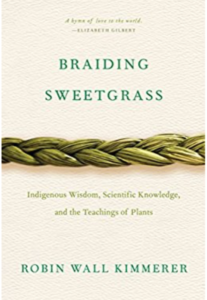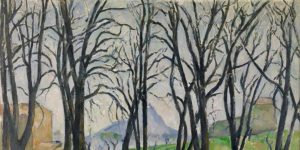Brading Sweet Grass
Shhhhhh…the trees are speaking.
November 8, 2019Robin Wall Kimmerer:
In the old times, our elders say, the trees talked to each other. They’d stand in their own council and craft a plan. But scientists decided long ago that plants were deaf and mute, locked in isolation without communication. The possibility of conversation was summarily dismissed. Science pretends to be purely rational, completely neutral, a system of knowledge-making in which the observation is independent of the observer. And yet the conclusion was drawn that plants cannot communicate because they lack the mechanisms that animals use to speak. . . . But pollen has been carried reliably on the wind for eons, communicated by males to receptive females to make . . . nuts. If the wind can be trusted with that fecund responsibility, why not with messages?
There is now compelling evidence that our elders were right—the trees are talking to one another. They communicate via pheromones, hormonelike compounds that are wafted on the breeze, laden with meaning. Scientists have identified specific compounds that one tree will release when it is under the stress of insect attack—gypsy moths gorging on its leaves or bark beetles under its skin. The tree sends out a distress call: “Hey, you guys over there? I’m under attack here. You might want to raise the drawbridge and arm yourselves for what is coming your way.” The downwind trees catch the drift, sensing those few molecules of alarm, the whiff of danger. This gives them time to manufacture defensive chemicals. . . . The individual benefits, and so does the entire grove. Trees appear to be talking about mutual defense. . . . There is so much we cannot yet understand with our limited human capacity. Tree conversations are still far above our heads.
Some studies of mast fruiting have suggested that the mechanism for synchrony comes not through the air, but underground. [1] The trees in a forest are often interconnected by subterranean networks of mycorrhizae, fungal strands that inhabit tree roots. The mycorrhizal symbiosis enables the fungus to forage for mineral nutrients in the soil and deliver them to the tree in exchange for carbohydrates. The mycorrhizae may form fungal bridges between individual trees, so that all the trees in a forest are connected. These fungal networks appear to redistribute the wealth of carbohydrates from tree to tree. A kind of Robin Hood, they take from the rich and give to the poor so that all the trees arrive at the same carbon surplus at the same time. They weave a web of reciprocity, of giving and taking. In this way, the trees all act as one because the fungi have connected them. Through unity, survival. All flourishing is mutual.
Fr. Richard Rohr, Center for Action & Contemplation:
‘For too long science and faith fell into the “sin of certainty,” each claiming Truth only for themselves and ignoring the beautifully symbiotic relationship that exists between them. Scientists like Robin Wall Kimmerer are an essential part of the Great Turning, dissolving the artificial binaries that have walled them off from one another. May we all have minds and hearts open enough to integrate the wisdom of our spiritual elders.’
Are trees social beings? In this international bestseller, forester and author Peter Wohlleben convincingly makes the case that, yes, the forest is a social network. He draws on groundbreaking scientific discoveries to describe how trees are like human families: tree parents live together with their children, communicate with them, support them as they grow, share nutrients with those who are sick or struggling, and even warn each other of impending dangers. Wohlleben also shares his deep love of woods and forests, explaining the amazing processes of life, death, and regeneration he has observed in his woodland.
After learning about the complex life of trees, a walk in the woods will never be the same again.


